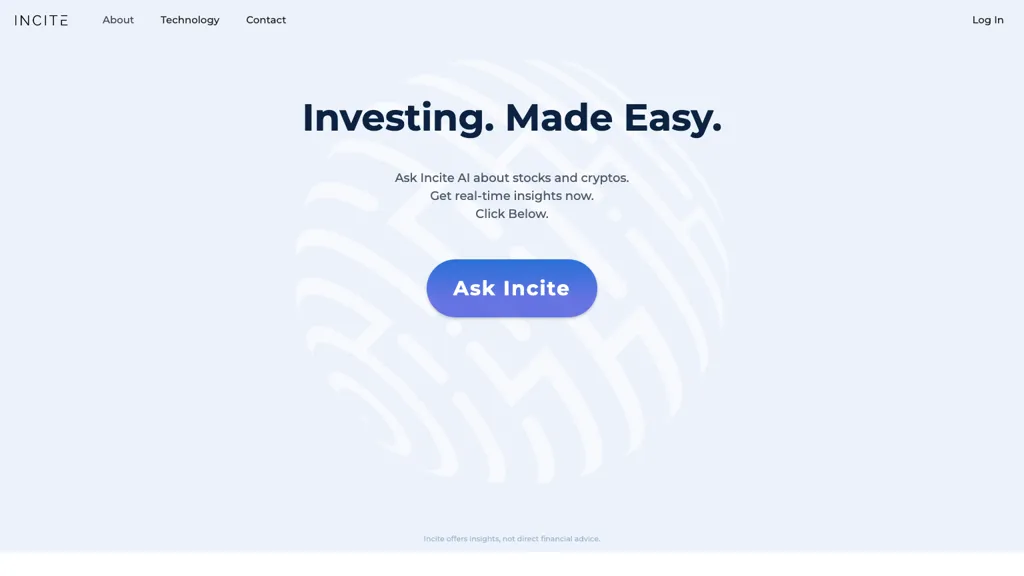Examining the price and cost of AI software for predicting and analyzing stocks is essential to ensure that you get value for your money without incurring hidden costs or unexpected expenses. Knowing what you pay for and the pricing structure can be very different. This will help you make an informed decision. Here are the top 10 ways to assess the price and costs of these platforms.
1. Understand Pricing Model
Subscription-based: Find out whether the platform has an annual or monthly cost and what features are available at each tier.
Pay-per-use: Find out whether you are charged according to the use of the platform (e.g. number of trades or data requests).
Freemium-model: Examine if it offers an unpaid level that has limitations in functionality, and charges for premium functions.
2. Compare Pricing Tiers
Overview of features: See the features included in each price level (e.g. basic, professional, enterprise).
Scalability: Ensure the pricing tiers are in line with your needs, whether you're an individual trader professional, or part of an institution.
Upgrade flexibility: Find out the possibility of being easily upgraded or downgraded as your requirements change.
3. Evaluate Hidden Costs
Data charges: Find out whether there are additional charges for premium data (e.g. live data, or advanced analytics).
Brokerage charges Check if the platform has additional charges for trading or integrate with brokers.
API usage - Assess whether there are any additional costs that come with API access and/or high-frequency use.
4. Test out free demos and trials
Trial period: Select platforms that let you try out the functions of their platform before making a commitment.
Trial limitations: Decide whether you are able to use all features in the trial or just one or a few.
Optional with no commitment: You can cancel your trial without incurring any fees if you feel that the platform does not satisfy your needs.
5. Find discounts and special offers
Discounts for annual subscriptions: Find out whether your platform offers discounts on subscriptions paid annually compared to plans that are paid on a monthly basis.
Referral programs: Find out whether you can earn discounts or credits for sharing the platform with others.
Institutional pricing If you're part of a larger organization, inquire about institutional or bulk pricing.
6. Examine the Return on the investment
Cost in relation to. worth: Evaluate whether the features and forecasts of the platform justifies the cost. It could help you save money or improve your trading decisions.
Examine the platform's performance track record or user testimonials to calculate the potential return on investment.
Cost alternatives - Compare the platform's cost with the potential cost in the event that you do not use it (e.g. missed chance, analysis time manually).
7. Review Cancellation and Refund Policies
You are able to unsubscribe at any point without incurring penalties or fees.
Refund policy Find out if the platform will refund the amount you paid for.
Auto-renewal: Determine if the platform automatically renews your subscription, and how you can remove yourself from the subscription.
8. Transparency of Pricing:
Clear pricing page: Make sure whether the website has pricing pages that are detailed, clear and does not contain any hidden fees.
Customer service: If you have any queries regarding pricing or extra costs Contact customer service.
Terms of service: Read the terms of service to understand the long-term commitments and penalties.
9. Compare yourself with your competitors
Comparing the features and costs of different platforms against their rivals will allow you to get the best deal.
User reviews: Read reviews from users to see if the platform's cost is justified.
Market positioning: Determine whether the platform is priced as premium, mid-tier or budget option, and if it is in line with your expectations.
10. Calculate Long-Term Costs
Price increases: Take a look at the past history of the platform and see how frequently it increases prices.
Additions to features - Check if new features are included in your current plan or if an upgrade is needed.
Costs for Scalability: Ensure the platform's pricing is fair when your trading activity or demands for data expand.
Bonus Tips
Trials for free on different platforms are available for you to try and compare the value and performance of different platforms.
Negotiate pricing: If you're frequent user or a member of a larger institution, ask about discounts or custom pricing.
You can find free educational sources on certain platforms.
The following tips can assist you in evaluating the prices and expenses of AI analysis and stock prediction platforms. You will be able pick one that is suitable for your budget while delivering the features you require. The price of a good platform must be able balance the affordability of the platform with its features. This will enable you to get the most out of your trading. Follow the best stock ai for website recommendations including ai for trading, ai investment app, ai investing app, ai trading, chart ai trading assistant, ai trading, ai trade, best ai for trading, ai investing app, best ai trading software and more.

Top 10 Tips To Assess The Risk Management Of Ai Stock Predicting/Analyzing Trading Platforms
Risk management is a crucial component of any AI stock predicting/analyzing trading platform, as it helps protect your investment and limit potential losses. A platform with robust risk management tools will help you navigate uncertain markets and make educated choices. Here are 10 top tips for assessing these platforms' risk management capabilities:
1. Evaluation of Stop-Loss and Take-Profit Features
Level that you can customize: You should be able to customize the stop-loss/take-profit levels of individual trades and strategies.
Find out if your platform supports trailing stop that adjusts itself automatically in the event that the market moves toward your.
You should check whether there are stop-loss options that can guarantee your position to be closed at the agreed price, regardless of whether markets fluctuate.
2. Measure Positions Tools
Fixed amount: Ensure that the platform allows you to define the positions you want to take based upon a sum of money that is fixed.
Percentage of Portfolio: Determine if it is possible to set the position size as a percentage of the total portfolio so that you can manage risk proportionally.
Risk-reward-ratio: Determine if the platform allows users to determine their own risk/reward ratios.
3. Look for Diversification Support
Multi-asset trading. Make sure that your platform supports multiple asset classes such as ETFs as well as Forex, Options and stocks.
Sector allocation: Determine if the platform offers tools for monitoring and managing exposure to sectors.
Geographic diversification - Check that the platform supports trading on international markets. This can help diversify geographical risk.
4. Review leverage and margin controls
Margin requirements - Make sure that the platform explains the margin requirements clearly.
Find out whether you can establish limit on leverage to limit risk exposure.
Margin call: Check that the platform has prompt notifications regarding margin calls. This will help prevent account closure.
5. Assessment and Reporting of Risk
Risk metrics - Ensure that your platform includes crucial risk metrics, such as the Sharpe ratio (or Value at Risk (VaR)), or drawdown (or value of the portfolio).
Scenario analysis: Verify that the platform allows you to test different scenarios of the market to assess the risks.
Performance reports - Check that the platform has comprehensive performance reports, which include the risk-adjusted returns.
6. Check for Real-Time Risk Monitoring
Monitoring of your portfolio. Make sure that your platform can monitor in real-time the risk associated with your portfolio.
Alerts and notifications: Determine whether the platform offers real-time alerts regarding risks-related events (e.g., margin breach, Stop-loss triggers).
Risk dashboards: Find out if the platform offers customizable risk dashboards for an extensive overview of your risk profile.
7. Evaluate Stress Testing and Backtesting
Stress testing - Ensure that your platform allows you stress test your portfolios and strategies in extreme market conditions.
Backtesting Check to see if your platform supports backtesting using historical data to assess the performance and risk.
Monte Carlo simulations: Verify if the platform uses Monte Carlo simulations to model a range of possible outcomes and assess risk.
8. Risk Management Regulations: Assess compliance
Check for regulatory compliance: Verify that the platform's compliance with the relevant Regulations on Risk Management (e.g. MiFID II for Europe, Reg T for the U.S.).
Best execution: Make sure that the platform is in line with best execution practices. It will guarantee that transactions are completed according to the best price available in order to reduce slippage.
Transparency. Verify that the platform is transparent and makes clear disclosures of potential risks.
9. Examine for Risks that are User Controlled Parameters
Custom risk rules - Be sure the platform permits you to create your own risk management rules.
Automated risk control: Check that the platform is able to automatically enforce rules for risk management according to your pre-defined parameters.
Manual overrides: Verify that the platform supports manual overrides in emergencies.
Study Case Studies and User Feedback
User reviews: Examine user feedback to determine the effectiveness of the platform in managing risk.
Case studies: Search for case studies or testimonials that highlight the platform's capabilities in risk management.
Community forums: Find out if there's an active community of traders who share their tips and strategies for managing risk.
Bonus Tips
Free Trial: Get a free trial of the features of the platform to manage risk in real scenarios.
Customer support: Make sure your platform has a robust assistance for any questions or concerns related to risk management.
Find educational sources.
Following these tips can help you evaluate the risks management options provided by AI stock-predicting and analyzing platforms. You can select a platform that will safeguard your investment while limiting potential losses. To ensure that your trading is successful and navigate volatile markets, robust risk management tools are vital. View the most popular ai in stock market recommendations for site tips including ai in stock market, investing with ai, ai tools for trading, ai stock analysis, ai software stocks, investing with ai, ai stock prediction, stock predictor, ai stock prediction, can ai predict stock market and more.
